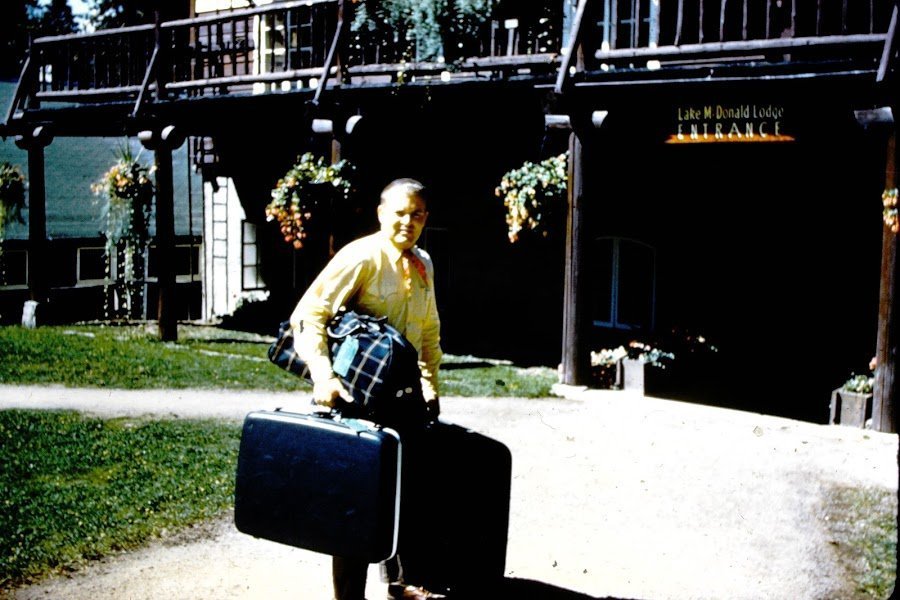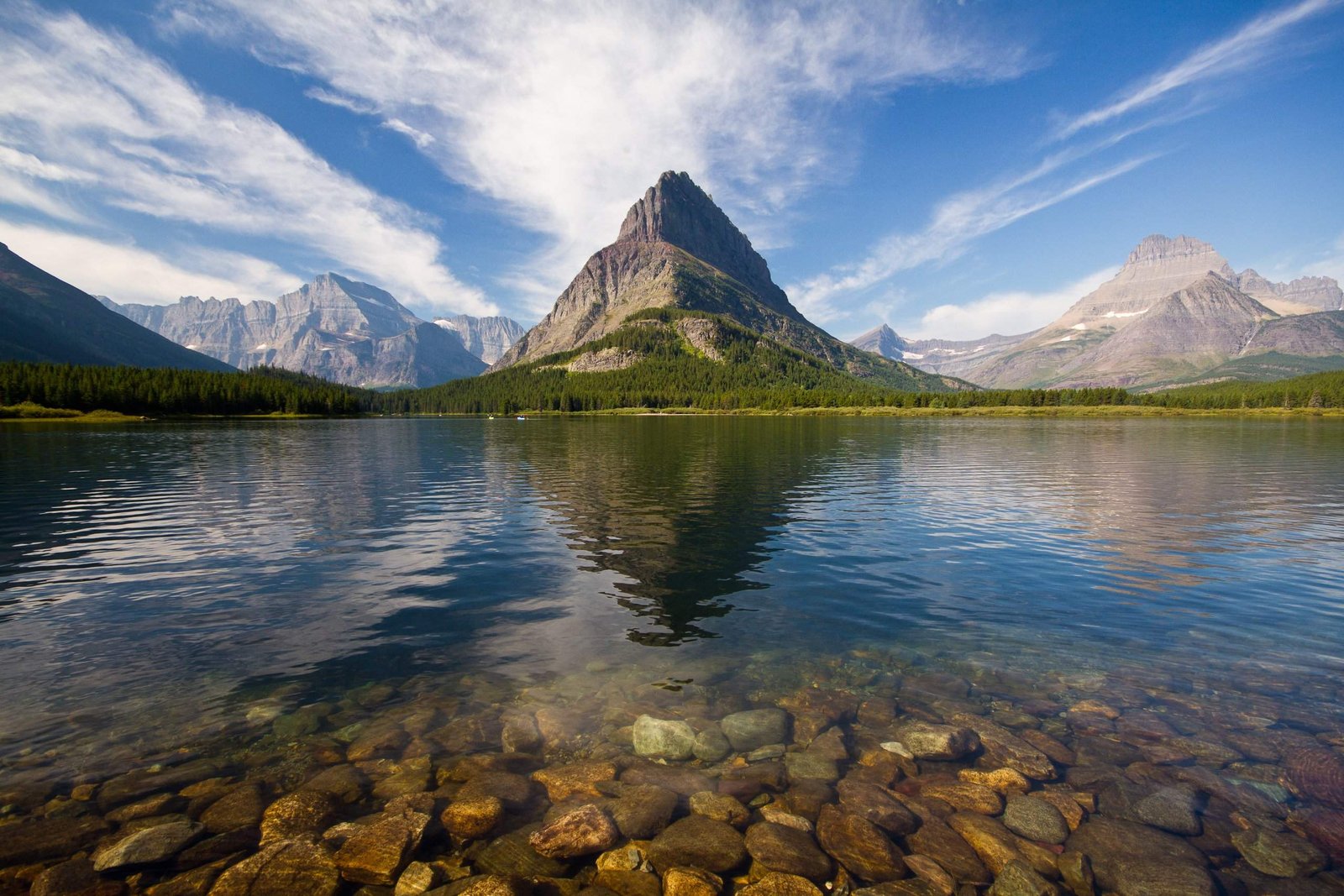Glacier National Park St Mary Visitor Center dark skies offer an unparalleled celestial experience. As an International Dark Sky Park, Glacier National Park provides pristine night sky viewing opportunities, with the St Mary Visitor Center serving as a prime location for stargazing and astronomy programs. The park’s commitment to preserving natural darkness, coupled with its stunning mountain landscapes, creates an ideal setting for observing the cosmos. Visitors can participate in ranger-led astronomy programs, engage in astrophotography, and witness the Milky Way in all its glory.
What Makes Glacier National Park’s Dark Skies Special?

Glacier National Park’s designation as an International Dark Sky Park sets it apart as a premier destination for stargazing. The park’s remote location and stringent light pollution regulations contribute to exceptionally dark skies, allowing visitors to see celestial objects that are often obscured in more populated areas. The St Mary Visitor Center, situated on the east side of the park, offers a unique vantage point for observing the night sky against the backdrop of the Rocky Mountains.
Key features of Glacier’s dark skies include:
- Minimal light pollution
- Clear, high-altitude air
- Expansive views of the Milky Way
- Opportunities to see rare celestial events
When Are the Best Times to Visit for Dark Sky Viewing?

The optimal times for dark sky viewing at Glacier National Park and the St Mary Visitor Center are:
- Summer months (July to September)
- New moon phases
- Clear, cloudless nights
- Late evening to early morning hours
During these periods, the park offers nightly astronomy programs that start at dusk and continue until midnight. These programs are available at both the Apgar and St Mary Visitor Centers.
What Can Visitors Expect at St Mary Visitor Center Dark Sky Programs?
The St Mary Visitor Center hosts a variety of dark sky programs designed to educate and inspire visitors about the night sky. These programs typically include:
- Ranger-led stargazing sessions
- Telescope viewing opportunities
- Constellation identification
- Discussions on celestial phenomena
- Astrophotography workshops (during special events)
Visitors should come prepared with warm clothing, as temperatures can drop significantly at night, even during summer months.
How Can Photographers Capture the Night Sky at Glacier National Park?
For astrophotography enthusiasts, Glacier National Park offers numerous opportunities to capture stunning night sky images. Here are some tips for photographing the dark skies at St Mary Visitor Center and surrounding areas:
- Use a sturdy tripod to stabilize your camera
- Opt for a wide-angle lens to capture more of the sky
- Set your camera to manual mode for full control over exposure
- Use a high ISO setting (1600-3200) to capture more light
- Choose a wide aperture (f/2.8 or wider) to let in more light
- Experiment with long exposure times (15-30 seconds) to capture star trails
Popular locations for night sky photography near St Mary Visitor Center include:
- Logan Pass
- Going-to-the-Sun Road
- Lake McDonald
What Regulations Should Visitors Be Aware of Regarding Dark Sky Preservation?
To maintain its status as an International Dark Sky Park, Glacier National Park has implemented several regulations:
- Use of red light flashlights or headlamps to preserve night vision
- Restrictions on artificial lighting in campgrounds and developed areas
- Encouragement of responsible use of photography equipment to minimize light pollution
Visitors are asked to respect these guidelines to ensure the preservation of the park’s dark sky resources for future generations.
Are There Any Special Events Related to Dark Sky Viewing?
Yes, Glacier National Park hosts several special events throughout the year focused on dark sky viewing and astronomy. Some notable events include:
- Astronomy Week: Held annually in September, this event features daytime and nighttime activities such as:
- Solar viewing sessions
- Night sky programs
-
Astrophotography workshops
-
Star Parties: Occasional events organized in collaboration with local astronomy clubs, offering enhanced viewing opportunities with multiple telescopes and expert guidance.
-
Meteor Shower Viewings: Special programs may be organized during major meteor showers, such as the Perseids in August.
What Amenities Are Available at St Mary Visitor Center for Night Sky Viewers?
The St Mary Visitor Center provides several amenities to enhance the dark sky viewing experience:
| Amenity | Description |
|---|---|
| Parking | Available on-site, but may be limited during peak events |
| Restrooms | Open during program hours |
| Information Desk | Staffed during daytime hours for inquiries |
| Telescopes | Provided during ranger-led programs |
| Seating | Limited; visitors are encouraged to bring their own chairs |
It’s important to note that while basic amenities are available, visitors should come prepared with their own supplies such as warm clothing, snacks, and water.
How Does Glacier National Park’s Dark Sky Initiative Contribute to Conservation?
Glacier National Park’s commitment to dark sky preservation extends beyond providing stellar stargazing opportunities. The park’s dark sky initiative contributes to conservation efforts in several ways:
- Wildlife Protection: Natural darkness is crucial for nocturnal animals and their ecosystems.
- Energy Conservation: Reduced artificial lighting leads to lower energy consumption.
- Cultural Preservation: Dark skies allow for the continuation of traditional celestial navigation and storytelling.
- Scientific Research: Pristine dark skies enable valuable astronomical research and observations.
By maintaining dark skies, Glacier National Park not only offers visitors a chance to connect with the cosmos but also plays a vital role in preserving the natural environment and supporting scientific endeavors.
What Should First-Time Visitors Know About St Mary Visitor Center Dark Skies?
First-time visitors to the St Mary Visitor Center for dark sky viewing should keep the following tips in mind:
- Arrive Early: Popular programs can fill up quickly, especially during peak season.
- Dress Appropriately: Temperatures can drop significantly at night, even in summer.
- Bring Supplies: Pack water, snacks, and a comfortable chair or blanket for seating.
- Allow Time for Dark Adaptation: It takes about 20-30 minutes for eyes to fully adjust to darkness.
- Use Red Light: Bring a red light flashlight or cover white lights with red cellophane to preserve night vision.
- Check the Weather: Clear skies are essential for optimal viewing.
- Learn Basic Constellations: Familiarize yourself with a few key constellations before your visit to enhance your experience.
By following these guidelines, visitors can make the most of their dark sky experience at Glacier National Park’s St Mary Visitor Center.
How Can Visitors Support Glacier National Park’s Dark Sky Preservation Efforts?
Visitors can play a crucial role in supporting Glacier National Park’s dark sky preservation efforts:
- Follow Park Regulations: Adhere to lighting guidelines and quiet hours in campgrounds.
- Educate Others: Share knowledge about the importance of dark skies with fellow visitors.
- Participate in Programs: Attend ranger-led astronomy programs to show support for dark sky initiatives.
- Practice Leave No Trace: Minimize impact on the environment, including light pollution.
- Donate: Consider contributing to the Glacier National Park Conservancy, which supports dark sky projects.
- Advocate: Promote dark sky preservation in your own community to reduce light pollution on a broader scale.
By taking these actions, visitors can help ensure that Glacier National Park’s St Mary Visitor Center dark skies remain a pristine natural resource for future generations to enjoy and study.
References:
1. [https://www.nps.gov/glac/planyourvisit/astronomy-programs.htm]
2. [https://glacier.org/glaciers-dark-sky-park-project/]
3. [http://www.distinctlymontana.com/star-party-glacier]